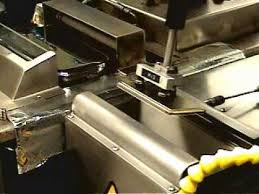BEST alloy conversion via the robotic hot solder dipping process is accomplished with a multitude of different conversion options available including the conversion to tin/lead, lead free and other alloys.
If you need to change the finish on a required component, when that component is not available, off the shelf, with the correct or specified finish, tinning services from BEST can make this alloy conversion. As an example, when building a high reliability printed circuit board assembly which must be assembled using traditional lead-bearing Sn63Pb37 alloy, tinning is a solution in changing out the plating on the components. If the components that you need to use in that assembly are only available in a RoHS-compatible finish, in this case, electroplated tin, the alloy needs to be “changed out”. The answer is to “wash” the RoHS finish in a “scavenging” solder pot and apply the Pb finish in the second solder pot. After this tinning operation, the alloy, which can be confirmed by XRF analysis, can be verified as being a tin-lead surface finish.
Conversely, in order to replace a Pb finishes with a RoHS-compliant Pb-free finish the controlled robotic tinning operation can provide a solution. This operation, although similar to the previously-described version, requires special solder pots filled with RoHS alloy and constructed from titanium (this is the only proven non-contaminating material that is immune to the aggressive molten Sn). Post tinning the RoHS compliant solder coating will be on the component leads.
 This lead tinning alloy conversion process through robotic tinning can be summarized in the following process steps:
This lead tinning alloy conversion process through robotic tinning can be summarized in the following process steps:
The procedure for lead tinning through-hole components, from start to finish, involves the following steps:
These process steps will help to insure a capable lead tinning alloy conversion process.